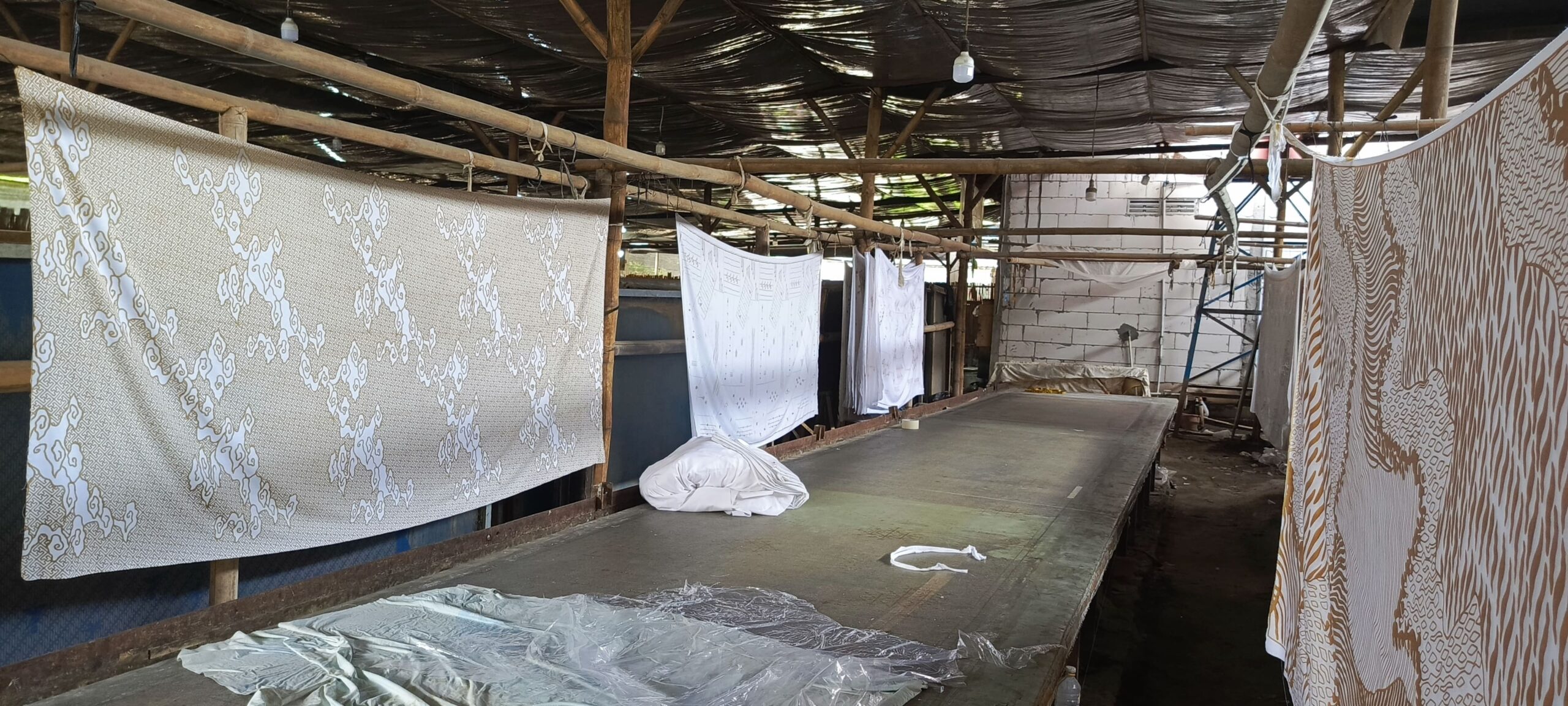In Malay/Indonesian, “cap” means stamped. Batik cap, compared to batik tulis, is a relatively newer tradition. Stamp batik, or popular as “Batik cap” is a special way of making batik. Instead of drawing designs with wax, stamps called ‘caps’ are used. These caps are usually made of copper because it spreads heat well. They press hot wax onto cotton fabric. People have been making batik like this in Java since the 1800s. This method helps make batik faster and cheaper.
Producing batik cap is a detailed process that needs patience and skill. Usually, men do this work. They start learning as boys and get better with time. They can create designs perfectly without needing drawn lines to guide them.
Getting the right amount of wax on the fabric is crucial for clear and precise designs. The wax recipe is often kept secret. The temperature must be perfect, and the amount of wax on the cap must be just right to avoid mistakes. Applying the wax at the right speed is also important. Getting the designs to line up perfectly is the hardest part. Some designs need different caps to finish them.
The Steps to Make Stamp Batik
The cap is like a stamp, but it’s made of copper. The cap is made by bending and arranging hundreds of tiny pieces of copper. This takes many hours of delicate and detailed work. Each piece is cut and placed to form a specific pattern or motif. Then, they’re carefully soldered together to secure them in place.
Once soldering is complete, the cap is placed in a wax resin and allowed to harden. Then, the edge of the copper cap used for printing is filed down. This is necessary because copper is a soft metal and filing is the only way to make it flat.
We need this stamp, since it is used to press hot wax onto fabric. First, the cap sits on a pad in a shallow pan of wax. When it’s heated to the right temperature, it holds enough wax to make one print on the cotton. After that, the cap goes back into the wax pan. Then, it’s aligned carefully to make the next print on the fabric and repeat the design.
This task requires a lot of skill. You can try it yourself, and it is quite difficult. Surely, you will admire how the men can smoothly work through meters of fabric, effortlessly creating flawless wax designs every time, with all the patterns perfectly aligned.
Similar to batik tulis, batik stamp goes through the process of dyeing, washing, drying, and redyeing. However, the difference lies in how the designs are made. Batik tulis is hand-drawn, while stamped batik uses a cap dipped in wax and then pressed onto the cloth.
Benefits of Batik Stamp
The advantage of batik cap is that it’s quicker, more precise (compared to hand-drawn), and often more cost-effective since it saves time and allows for more production. Even though batik cap may not demand the same level of skill and time as hand-drawn pieces, there are still many beautiful and excellent cap-made batiks.
This maintains the artistic quality. Sometimes, a mix of cap and hand-drawn techniques is used on a single batik piece, known as batik kombinasi or combination batik.



